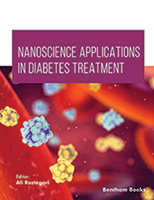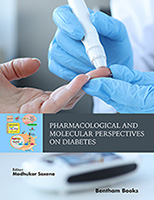While under-nutrition still is a serious problem in less wealthy countries, currently the obesity pandemic is the major health concern worldwide, especially in industrialized and developing countries. Easy access to comparatively inexpensive, palatable and energy-dense food combined with the sedentary lifestyle favors development of overweight and obesity. Social status has a major impact on development of obesity, most likely by influencing key behavioral factors but also through its prominent contribution to stress exposure.
Age is a primary risk factor for weight gain. Overweight and obesity-related morbidities, e.g. primarily cardiovascular disease and type 2 diabetes, but also cancer, are the major cause of reduced healthy life-span. Their incidence correlates with duration of obesity. Therefore, a serious concern is the increase in obesity in youth. Feeding behavior, which is acquired in early childhood, is maintained life-long. Therefore, it is important to identify critical and sensitive periods for obesity development. Triggers for obesity development may, however, act even earlier in life: the nutritional and metabolic status of the mother may impact the development of an obese phenotype in the offspring by fetal programing.
Obesity-related diseases are a consequence of dysfunctional adipose tissue. Excess storage of fat in adipose tissue results in remodeling that encompasses hypertrophy and hyperplasia of white adipocytes, loss of “fat burning” brown adipocytes, white adipocyte metabolic stress and, eventually, white adipocyte death. A shift from an anti-inflammatory to a proinflammatory profile of resident adipose macrophages results in the increased release of proinflammatory cytokines. Adipose tissue insulin resistance gives rise to an increased release of fatty acids, which are stored as ectopic fat in skeletal muscle and liver. An imbalance in adipokine formation affects metabolism in their target organs. As a rule, the chronic subacute inflammation that underlies these changes is more pronounced in abdominal adipose tissue than in subcutaneous adipose tissue, explaining the tight correlation of waist circumference rather than BMI with obesity-related diseases. Since adipose tissue dysfunction does not strictly correlate with its mass, it is important to identify easily detectable blood surrogate markers for its functional status.
Even though excessive caloric intake is, beyond any doubt, the major driving factor for obesity development, environmental xenobiotics causing endocrine disruption may contribute to obesity by causing reduced energy expenditure, hormone receptor-driven changes in adipocyte function and epigenetic reprogramming. Similarly, the gut microbiota appears to play a role in the development of overweight. Gut sterilization and microbiome transplantation affect diet-induced obesity development in mice. However, presently, no reliable data are available for humans. Current studies analyze the benefit of pro- or prebiotic diets to improve weight control by influencing the microbiome.
Caloric restriction is key to weight reduction. Many diets with varying proportions of macronutrients have been proposed to improve healthy weight loss. However, evidence that extreme reduction or exclusion of one macronutrient from the diet might improve the outcome appears to be scarce. Similarly, the impact of minor food constituents, such as secondary plant metabolites, e.g. polyphenols, is still a matter of debate. Besides caloric restriction, an increase in physical activity is an essential life-style intervention for weight reduction. There is increasing evidence that physical activity not only increases energy expenditure but also positively reprograms metabolism both in skeletal muscle and systemically by modulating hormone, myokine and cytokine homeostasis.
While life-style intervention is the most logical approach to prevent or treat obesity, lack of compliance also makes it the most ineffective. Several pharmacological targets, peripheral and central, have been identified to treat obesity or obesity-related comorbid conditions with varying short term efficacy and long term success. Strong interpatient variations call for a more individualized approach. Bariatric surgery, once thought to be an ultima ratio to combat extreme obesity, has proved to improve metabolic health prior to major weight reduction and has recently gained much attention as “metabolic surgery” .
The 17 chapters of this book approach the obesity problem from the molecular, mechanistic, epidemiological and clinical point of view.
Gerhard P. Püschel
Institute of Nutritional Science,
Department of Nutritional Biochemistry,
University of Potsdam,
Nuthetal,
Germany





